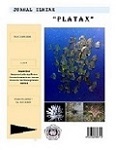Direct Benefit Value Of Coral Reefs Ecosystem in Bahoi Village West Likupang District North Minahasa Regency
DOI:
https://doi.org/10.35800/jip.v12i1.50086Keywords:
Direct benefits, Ecosystem valueAbstract
The high use of coastal resources especially coral reefs by the people of Bahoi Village can affect the existing ecosystem. This research was conducted in July 2021 in Bahoi Village, West Likupang District, North Minahasa Regency designed to determine the value of direct benefits of the coral reefs ecosystem at the location. The data collected in this study were primary and secondary data. Primary data were obtained by conducting interviews among the fishermen as respondents. The interview was conducted using the purposive sampling method by taking a sample of 30 respondents from fishermen's households in the community. As for secondary data, namely the ecological condition of coral reefs (coral cover), the general condition and population of Bahoi Village were based on YAPEKA 2015 data. The data collected were then tabulated and analyzed using the effect on production (EOP) model to determine the value of the direct benefits of coral reefs. The main livelihood of the people of Bahoi Village is fishermen, which is comprised of 107 people (60% of the total number of households in Bahoi Village. The results show that the community of Bahoi is very dependent on the coastal resources. Based on the result of the EOP analysis technique used the value of direct use benefits obtained from coral reef fisheries is Rp. 379,746,378,-/ha/year.
Keywords: Direct benefits, ecosystem value, Coral reefs
Abstrak
Tingginya pemanfaatan pesisir khususnya terumbu karang oleh masyarakat Desa Bahoi dapat mempengaruhi sumber daya ekosistem yang ada. Penelitian ini dilaksanakan pada bulan Juli 2021 di Desa Bahoi, Kecamatan Likupang Barat, Kabupaten Minahasa Utara dengan tujuan untuk mengetahui nilai manfaat langsung ekosistem terumbu karang di lokasi tersebut. Sumber data yang dikumpulkan dalam penelitian ini menggunakan data primer dan data sekunder. Data primer didapatkan dari hasil wawancara. Wawancara yang dilakukan menggunakan metode purposive sampling dengan mengambil sampel responden sebanyak 30 orang. Sedangkan untuk data sekunder yaitu kondisi ekologi terumbu karang (tutupan karang) Desa Bahoi, Gambaran umum Desa Bahoi dan jumlah penduduk Desa Bahoi. Data yang dikumpulkan selanjutnya dibuat tabulasi dan dilakukan analisis untuk menentukan nilai manfaat langsung dari terumbu karang yang ada di Desa Bahoi. Mata pencaharian utama masyarakat Desa Bahoi adalah nelayan yaitu sebanyak 107 orang (60% dari total jumlah kepala keluarga Desa Bahoi). Dimana menunjukkan bahwa masyarakat Desa Bahoi sangat bergantung pada hasil perairan di Desa Bahoi. Berdasarkan hasil analisis dengan pendekatan EOP, diperoleh nilai manfaat langsung yang didapatkan dari pemanfaatan terumbu karang sebagai perikanan tangkap di Desa Bahoi yaitu sebesar Rp. 379.746.378,-/ha/tahun.
Kata kunci: Manfaat langsung, Nilai, Terumbu karang
References
Adrianto, L. (2006). Pengantar Penilaian Ekonomi Sumberdaya Pesisir dan Laut. Pusat Kajian Sumberdaya Pesisir dan Lautan Institut Pertanian Bogor (PKSPL-IPB).
Arkham, M. N., Wahyudin, Y., Pahlevi, M. R., & Hutapea, R. Y. F. (2020). Jasa Penyedia Ekosistem Terumbu Karang di Kawasan Suaka Alam Perairan Kepulauan Raja Ampat dari Perspektif Valuasi Ekonomi. Jurnal Kelautan: Indonesian Journal of Marine Science and Technology, 13(3), 239–248. https://doi.org/10.21107/jk.v13i3.7921
Digdo, A. A., Wijayanto, A., Yunita, A., Putriraya, A. R., Sapari, A., Rogi, D., Setiawan, F., Henry, J., Hidayati, L., Makarunggala, M., Muhammad, F., & Tasidjawa, S. (2015). To Strengthen Marine Biodiversity in North Sulawesi (Bahoi, Talise, and Lihunu) by Enlarging and Creating Marine Protected Areas.
Lestaluhu, A. R., & Wasahua, J. (2014). Valuasi Ekonomi Sumberdaya Terumbu Karang Kepulauan Banda Kabupaten Maluku Tengah Provinsi Maluku. Agrikan: Jurnal Agribisnis Perikanan , 7(1), 25–34. https://doi.org/10.29239/j.agrikan.7.1.25-34
Lubis, S. B., Suraji, Sofiullah, A., Annisa, S., Miasto, Y., Puspitasari, R., Monintja, Marina, Mudatstsir, & Sitorus, E. N. (2016). Rencana Aksi Nasional (RAN) Konservasi Karang Periode I: 2016 - 2020 (1st ed.). Direktorat Konservasi dan Keanekaragaman Hayati Laut. Direktorat Jenderal Pengelolaan Ruang Laut.
https://onesearch.id/Record/IOS17460.slims-494
Manahampi, R. M., Rengkung, L. R., Rori, Y. P. I., & Timban, J. F. J. (2015). Peranan Ekowisata Bagi Kesejahteraan Masyarakat Bahoi Kecamatan Likupang Barat. Agri-Sosioekonomi, 11(3A), 1–18. https://doi.org/10.35791/agrsosek.11.3A.2015.10181
Rembet, U. N. W. J., & Wantasen, A. S. (2016). Kajian Ekonomi Terumbu Karang di Perairan Desa Bahoi Kabupaten Minahasa Utara. Jurnal Ilmiah Platax, 3(2), 112–119. https://doi.org/10.35800/jip.3.2.2015.13226
Tasidjawa, S., Mandagi, S. V, & Lasabuda, R. (2013). Determination of core zone of marine sanctuary in Bahoi Village, North Minahasa Regency. Aquatic Science & Management, 10–16. https://doi.org/https://doi.org/10.35800/jasm.0.0.2013.2271
Zurba, N. (2019). Pengenalan Terumbu Karang Sebagai Pondasi Utama Laut Kita (1st ed.). Unimal Press.
Downloads
Published
How to Cite
Issue
Section
License
Copyright (c) 2023 Rezky G. T. L Kindangen, Joudy R. R. Sangari, Adnan S. Wantasen, Unstain N. W. J. Rembet, Stephanus V. Mandagi, Alex D. Kambey

This work is licensed under a Creative Commons Attribution-NonCommercial 4.0 International License.
COPYRIGHT
Authors who publish with this journal agree to the following terms:
Authors hold their copyright and grant this journal the privilege of first publication, with the work simultaneously licensed under a Creative Commons Attribution License that permits others to impart the work with an acknowledgment of the work's origin and initial publication by this journal.
Authors can enter into separate or additional contractual arrangements for the non-exclusive distribution of the journal's published version of the work (for example, post it to an institutional repository or publish it in a book), with an acknowledgment of its underlying publication in this journal.
Authors are permitted and encouraged to post their work online (for example, in institutional repositories or on their website) as it can lead to productive exchanges, as well as earlier and greater citation of the published work (See The Effect of Open Access).






































